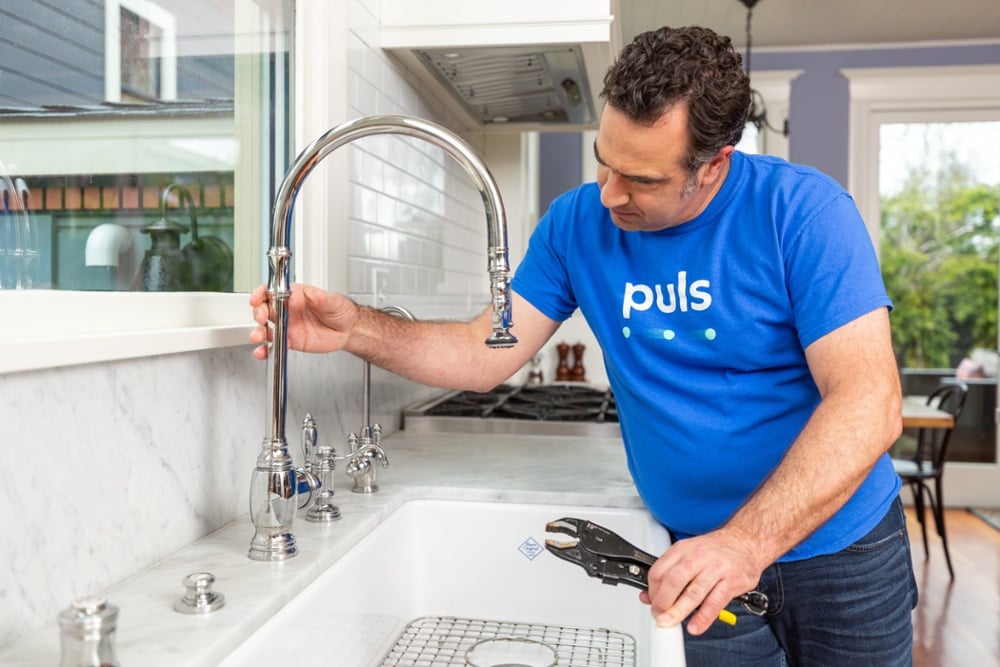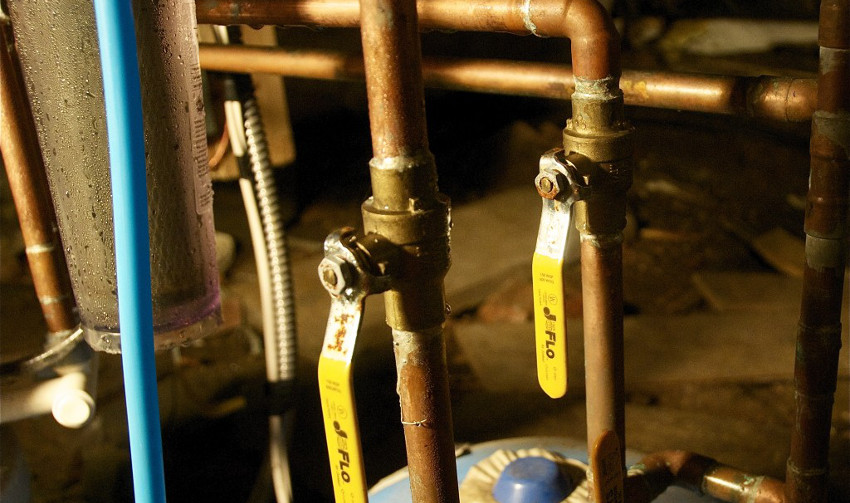Appliance Concerns: When To Look For a Plumbing Professional's Help for Common Concerns
Appliance Concerns: When To Look For a Plumbing Professional's Help for Common Concerns
Blog Article
We've discovered the article relating to Why Do My Plumbing Pipes Make A Knocking Noise directly below on the web and think it made perfect sense to talk about it with you on my blog.

To detect noisy plumbing, it is necessary to figure out initial whether the unwanted audios happen on the system's inlet side-in various other words, when water is turned on-or on the drainpipe side. Sounds on the inlet side have differed causes: too much water pressure, used valve as well as tap parts, poorly attached pumps or other devices, inaccurately put pipeline bolts, and plumbing runs having way too many tight bends or various other restrictions. Noises on the drainpipe side typically come from inadequate location or, just like some inlet side sound, a layout consisting of limited bends.
Hissing
Hissing noise that happens when a tap is opened slightly normally signals too much water pressure. Consult your regional public utility if you suspect this issue; it will certainly be able to tell you the water stress in your location and can set up a pressurereducing shutoff on the inbound water supply pipe if needed.
Thudding
Thudding sound, often accompanied by trembling pipelines, when a tap or appliance valve is shut off is a problem called water hammer. The sound and vibration are triggered by the resounding wave of stress in the water, which suddenly has no place to go. Often opening up a shutoff that releases water quickly into a section of piping consisting of a limitation, arm joint, or tee installation can generate the very same problem.
Water hammer can generally be cured by installing installations called air chambers or shock absorbers in the plumbing to which the problem valves or taps are attached. These devices allow the shock wave produced by the halted circulation of water to dissipate airborne they contain, which (unlike water) is compressible.
Older plumbing systems may have short upright areas of capped pipeline behind walls on faucet runs for the exact same objective; these can eventually fill with water, decreasing or ruining their performance. The treatment is to drain the water system completely by turning off the primary water system valve as well as opening up all taps. After that open up the major supply shutoff and also shut the taps one by one, starting with the faucet nearest the valve and ending with the one farthest away.
Babbling or Shrilling
Extreme chattering or shrilling that happens when a valve or faucet is turned on, and that usually goes away when the installation is opened completely, signals loosened or faulty internal parts. The remedy is to change the shutoff or faucet with a new one.
Pumps and devices such as cleaning makers as well as dishwashers can transfer electric motor sound to pipes if they are improperly connected. Connect such products to plumbing with plastic or rubber hoses-never stiff pipe-to isolate them.
Other Inlet Side Noises
Squeaking, squealing, scraping, snapping, and also touching usually are brought on by the growth or contraction of pipes, usually copper ones providing hot water. The audios take place as the pipes slide against loosened fasteners or strike neighboring home framing. You can usually identify the location of the trouble if the pipelines are exposed; simply comply with the sound when the pipelines are making noise. More than likely you will uncover a loosened pipe wall mount or an area where pipes exist so close to flooring joists or other framing items that they clatter versus them. Attaching foam pipe insulation around the pipelines at the point of get in touch with need to fix the trouble. Be sure bands and hangers are safe and secure as well as give adequate assistance. Where possible, pipe bolts should be connected to massive structural components such as foundation wall surfaces as opposed to to framing; doing so minimizes the transmission of resonances from plumbing to surfaces that can magnify and transfer them. If connecting bolts to framing is inevitable, cover pipes with insulation or other resistant material where they get in touch with bolts, and sandwich the ends of brand-new bolts between rubber washers when mounting them.
Dealing with plumbing runs that suffer from flow-restricting tight or countless bends is a last resort that ought to be embarked on just after consulting a competent plumbing specialist. Regrettably, this circumstance is rather usual in older houses that may not have been developed with interior plumbing or that have actually seen several remodels, especially by novices.
Drainpipe Sound
On the drainpipe side of plumbing, the principal objectives are to remove surfaces that can be struck by falling or rushing water and to protect pipes to consist of inescapable audios.
In brand-new building and construction, bathtubs, shower stalls, toilets, and wallmounted sinks and basins ought to be set on or against resilient underlayments to decrease the transmission of noise via them. Water-saving toilets and faucets are less loud than standard versions; mount them as opposed to older kinds even if codes in your location still allow making use of older components.
Drains that do not run up and down to the cellar or that branch right into horizontal pipe runs supported at floor joists or other mounting existing specifically troublesome noise problems. Such pipes are large enough to radiate significant vibration; they likewise bring considerable quantities of water, that makes the scenario even worse. In brand-new building and construction, define cast-iron dirt pipelines (the huge pipelines that drain pipes bathrooms) if you can manage them. Their enormity consists of a lot of the sound made by water going through them. Likewise, prevent routing drainpipes in walls shown to rooms and also spaces where individuals collect. Walls including drainpipes need to be soundproofed as was defined earlier, using dual panels of sound-insulating fiber board as well as wallboard. Pipes themselves can be covered with special fiberglass insulation created the objective; such pipes have an impervious vinyl skin (occasionally including lead). Results are not constantly adequate.
If Your Plumbing is Making These Sounds, There’s a Problem
A Bang or Thump When You Turn Off a Faucet
If a loud bang or thump greets you each time your turn off running water, you likely have a water hammer. A water hammer occurs when the water velocity is brought to a halt, sending a shock wave through the pipe. It can be pretty jarring — even worse, damaging to your plumbing system. All that thudding could loosen connections.
Strange Toilet Noises
You’re so familiar with the sounds your toilet makes that your ears will be attuned to anything out of the ordinary. Fortunately, most unusual toilet noises can be narrowed down to just one of several problems.
Foghorn sound:
Open the toilet tank Flush the toilet When you hear the foghorn noise, lift the float to the top of the tank If you’re ambitious, you can remove the ballcock valve and disassemble it to replace the washer. Or you can more easily replace the ballcock valve entirely. This device is relatively inexpensive and available at most any hardware store.
Persistent hissing:
The hissing following a flush is the sound of the tank filling. It should stop once the tank is full. But if the hissing continues, it’s likely because water is leaking out of the tank. The rubber flap at the bottom of the tank can degrade, letting water slip through and into the bowl. That’s why the tank is refilling continuously. Fortunately, this is an easy fix:
Cut the water to the toilet by closing the shutoff valve on the water supply line. Flush the toilet to drain the tank. Disconnect the flapper Attach the new flapper Gurgling or bubbling:
Gurgling or bubbling suggests negative air pressure in the drain line, likely resulting from a clog. As air releases, it causes the water in the toilet to bubble. This could either be a minor issue or a major one, depending on the clog’s severity. Clogs can be caused by toilet paper or more stubborn obstructions such as tree roots. If you can’t work out the clog with a plunger, contact a professional plumber for assistance because a clog of this magnitude could lead to filthy and unsanitary sewage backups in your sink bathtub.

I hope you enjoyed our part about Why Do My Plumbing Pipes Make A Knocking Noise. Thanks a lot for spending some time to read our content. Are you aware of another individual who is involved in Why Do My Pipes Make Noises? Why not promote it. We value reading our article about Why Your Water Pipes Are Noisy and How To Shut Them Up.
Book A Free Estimate Report this page